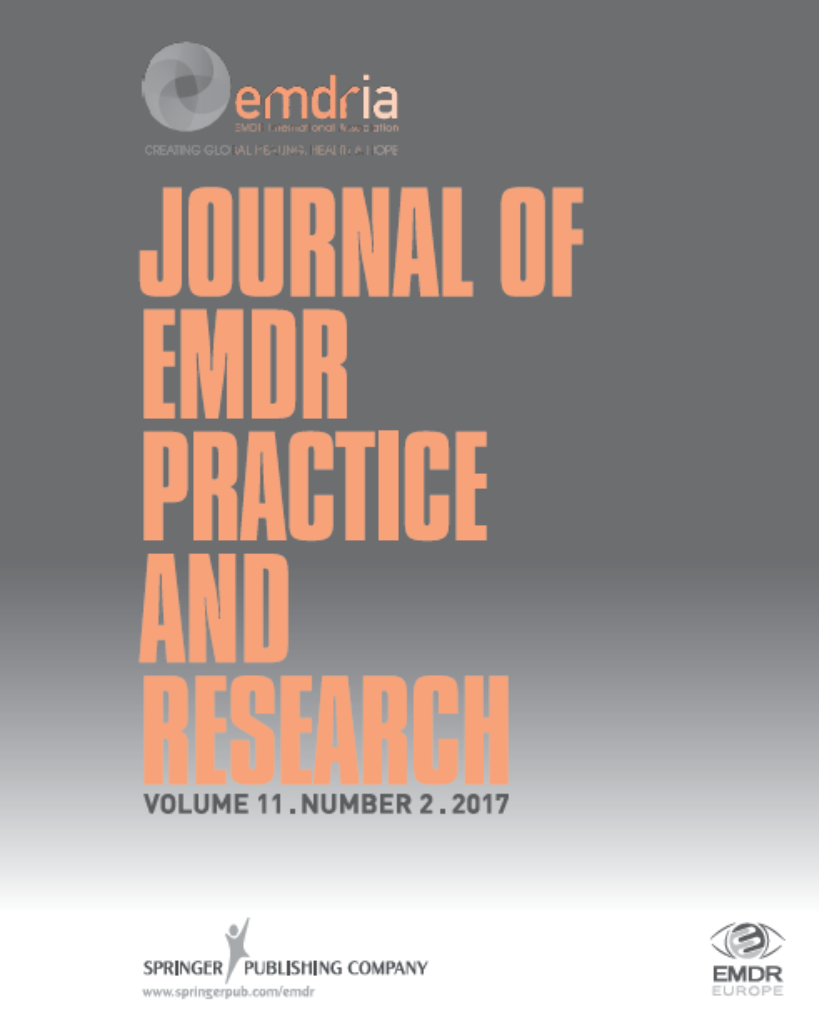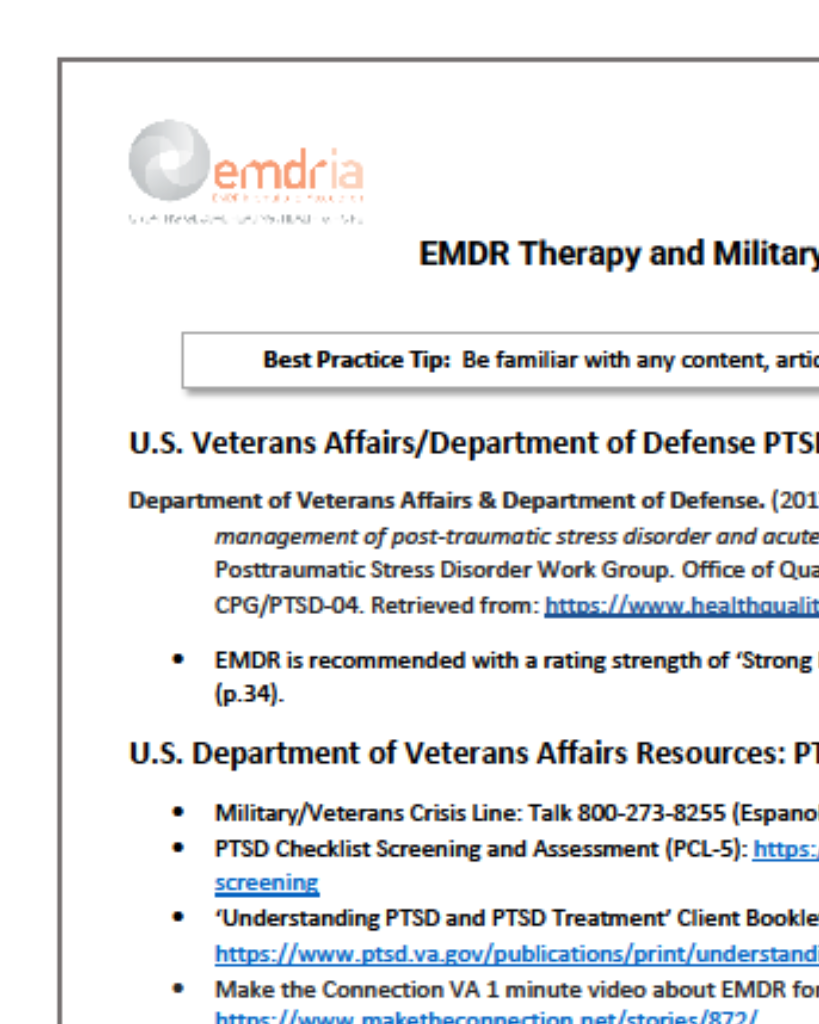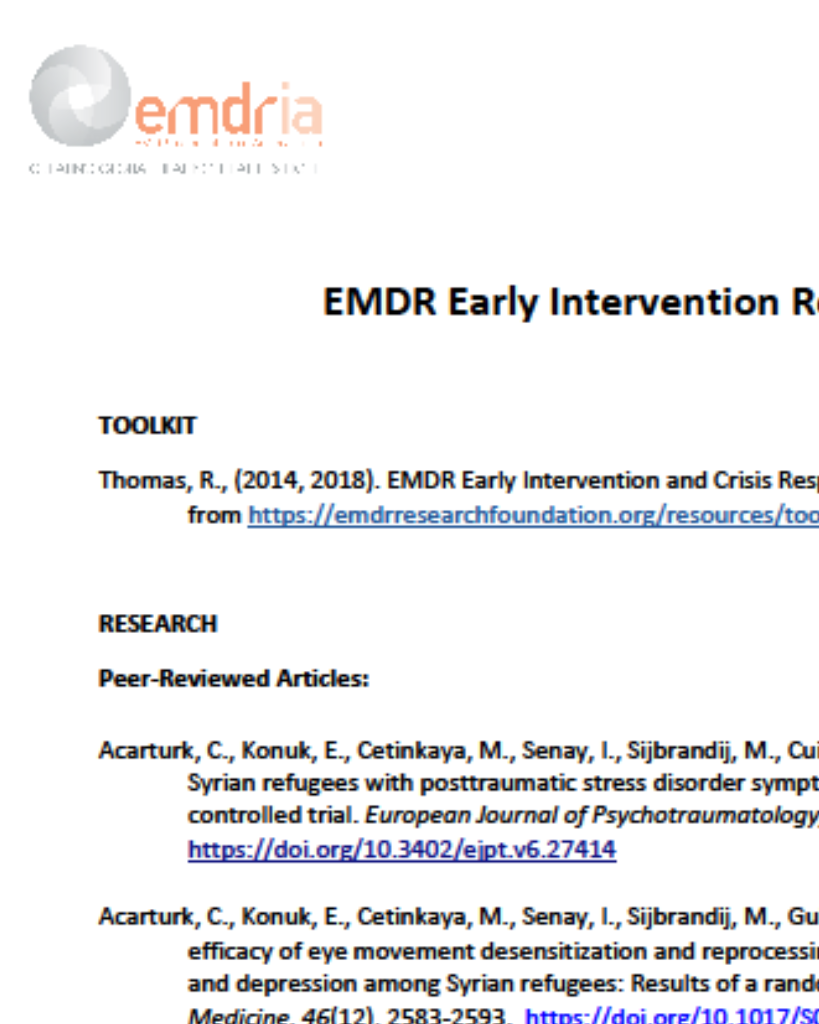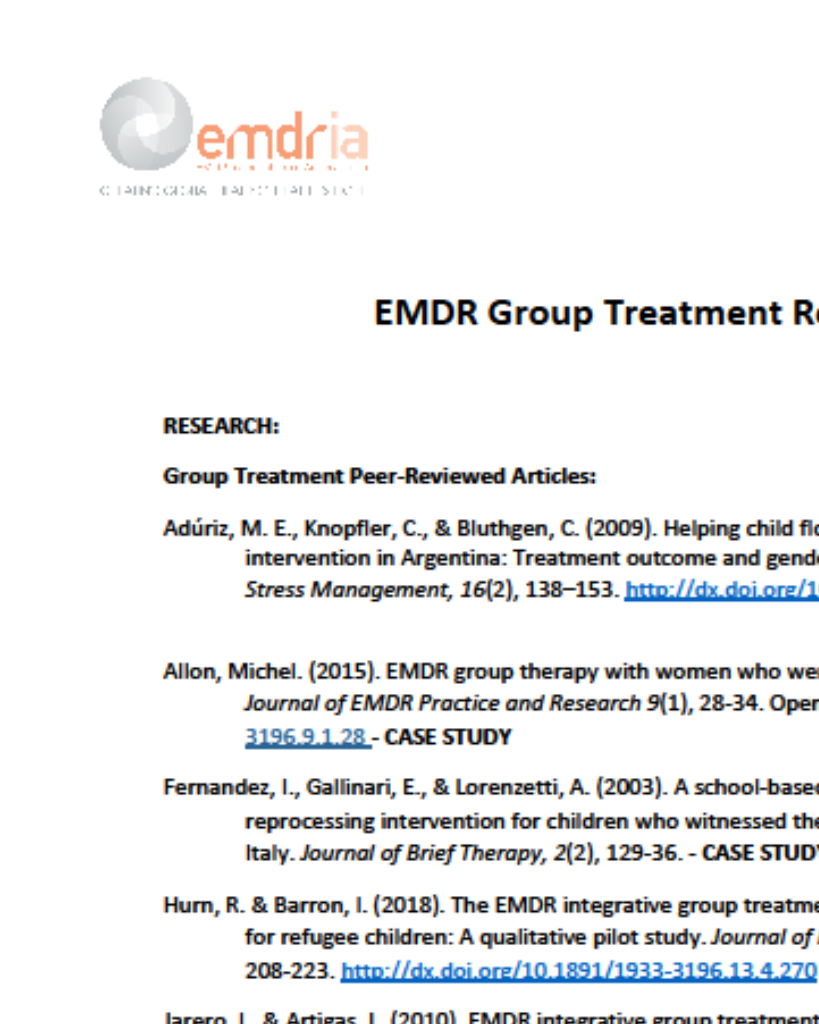Preliminary Efficacy of the Transdiagnostic EMDR-Negative Affect Protocol
Study using the Positive and Negative Affect Schedule and testing the EMDR-Negative Affect protocol in first responders.
Article Abstract
“First responders and their dependents must cope with the stress from their occupational duties. Those who present for treatment can be overwhelmed by their affective display. In this study, we used a mixed methods design with two first responders and the widow of a first responder. We used the Positive and Negative Affect Schedule measure to identify the negative affect and tested the Eye Movement Desensitization and Reprocessing-Negative Affect protocol, which directly targets the negative affect. From baseline to the end of treatment, all three clients had a clinically significant reduction in negative affect, and at 3-month follow-up, the two first responders had a significant reduction in negative affect. There was also a decrease in scores on attachment, depression, generalized anxiety, suicidality, and posttraumatic stress symptoms, as well as an increase in scores on resilience. The findings show promising results; however, the protocol needs randomized controlled trials with first responders and veteran populations in larger sample sizes to prove its efficacy.”
—Description from publisher
Article Access
Free Access for EMDRIA Members or Purchase/Subscription Required
This content is restricted for members only. Please Log In or Join EMDRIA.





